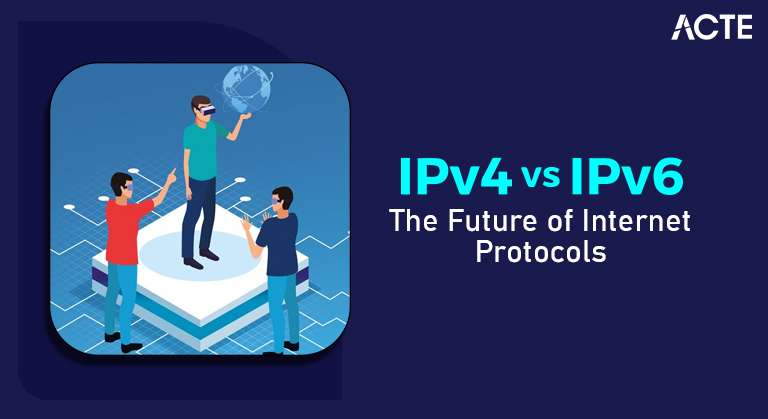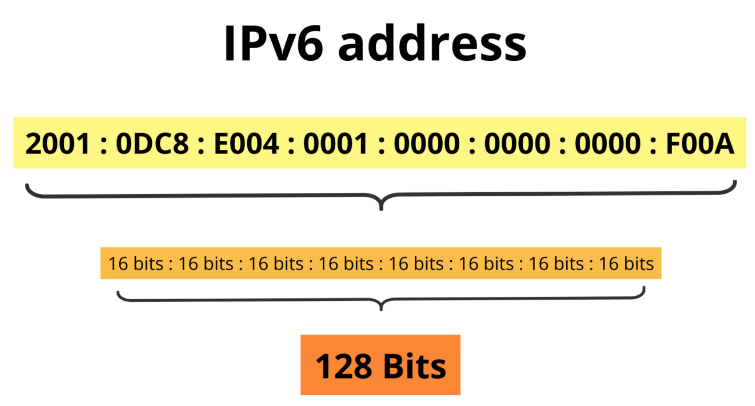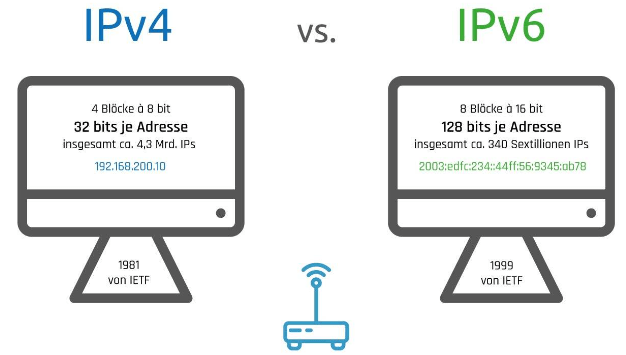
- Introduction to Internet Protocols
- What is IPv4?
- What is IPv6?
- Key Differences Between IPv4 and IPv6
- Transition from IPv4 to IPv6
- Characteristics of IPv4 and IPv6 Security
- The Efficiency and Speed of IPv4 and IPv6
- Conclusion
Introduction to Internet Protocols
IP (Internet Protocols) generously grant us the terms on which data can be exchanged over networks and thus is inherently termed as a source of digital communication. These protocols provide the standard to which devices can connect and share information efficiently, often tested and optimized in a Sandbox Environment to ensure reliability and security before deployment. Since the 1980s, everything used IPv4 due to its dominant 32-bits space addressing system. But as the Internet expanded, these constraints quickly revealed themselves with address space shortages, and IPv6 was born. IPv6: The substantially larger address pool afforded by the 128-bit addresses used by IPv6, along with improved computer security and scalability, among many other enhancements. They are fundamental to enabling the next generation of network connectivity.
What is IPv4?
Version 4 of the Internet Protocol, or IPv4, is the fourth iteration; however, it remains one of the Internet’s core protocols and building blocks. IPv4 was the first address family and is still widely used today despite being around long before the Internet. It uses a 32-bit system, which means there are only about 4.3 billion IP addresses that can be allocated to all global users by various commissions, including APNIC (Asia-Pacific Network Information Center). These addresses are four numbers separated by dots, written in “dotted-decimal notation” (e.g., 192.168.0.1).
IPv4 address provides routing functions through Cyber Security Training Courses, which are necessary for networking components to communicate with one another over the Internet. But now that the Internet is growing fast and running out of address, and above all realizing it was a little slow, around this issue that comes up row over IPv4. To solve this problem, we delayed using techniques such as Network Address Translation (NAT) were created to extend the use life of IPv4.
Interested in Obtaining Your IPv4 and IPv6 Certificate? View The Cyber Security Online Training Offered By ACTE Right Now!
What is IPv6?
Internet Protocol version 6, or IPv6, is the sixth generation of the Internet Protocol designed to eventually replace IPv4 and supplant it because of its lack of accessible IP addresses. It emerged in the late 1990s and has a 128-bit addressing system that provides virtually unlimited unique addresses, 340 undecillion (3.4 x 10^38) addresses.

IPV6 addresses, separated with colons in hexadecimal notation, offer much larger space than those of IPV4. These protocols provide the standard to which devices can connect and share information efficiently, while also incorporating security measures to protect against threats such as Keylogger that can intercept sensitive data. Additionally, it aids in easier allocation and management of addresses.
Key Differences Between IPv4 and IPv6
| Feature | IPv4 | IPv6 |
|---|---|---|
| Addressing Format | 32-bit addressing (e.g., 192.168.1.1) | 128-bit addressing (e.g., 2001:0db8:85a3:0000:0000:8a2e:0370:7334) |
| Address Space | Around 4.3 billion addresses | Approximately 340 undecillion addresses |
| Header Complexity | More complex header with 12 fields | Streamlined header with 8 fields |
| Security Features | Security is optional (IPsec is implemented externally) | Integrated security features (IPsec is mandatory) |
| Configuration | Requires manual configuration or DHCP | Supports auto-configuration (stateless address autoconfiguration) |
| Broadcasting | Allows broadcasting | No broadcasting; utilizes multicast and anycast |
To Explore IPv4 and IPv6 in Depth, Check Out Our Comprehensive Cyber Security Online Training To Gain Insights From Our Experts!
Transition from IPv4 to IPv6
IPv4 to IPv6 transition is the only solution that will overcome IPv4’s limited area of addressing, mainly the depletions in its available addresses, which increase rapidly with the Internet. The following details highlight transition areas:
1. Reason for Transition:
The main reason to transition to IPv6 is the need for IPv4 addresses. Now that billions of devices are connected to the Internet, the demand for IP addresses has increased significantly beyond the available supply to make a more lasting option, while also helping to address concerns such as Cyber Defamation, which can be fueled by inadequate network security and anonymity in IPv4 systems.
2. Problems:
- Nonnatively Compatible: IPv4 and IPv6 are not natively compatible, which creates problems for devices and networks that have to communicate over both protocols.
- Legacy Systems: Most organizations rely on legacy systems that function with IPv4; thus, the upgrade will become challenging and costly.
- Training and Expertise: The configuration and characteristics of IPv6 require the skill and experience of networking professionals for effective management, thus adding more complexity in switching over.
- Dual Stack: This mechanism enables dual functionality, where a device can simultaneously operate using both IPv4 and IPv6 and communicate over both IPv4 and IPv6 during the transition period.
- Tunnelling Techniques: Such as 6to4 and Teredo encapsulate IPv6 packets in IPv4 packets, allowing IPv6 communication over existing IPv4 networks.
- Translation: Protocol NAT64 translates IPv6 packets into IPv4 and vice versa, enabling the IPv6 and IPv4 protocols to be compatible.
3. Transition Mechanisms:
4. Deployment:
Although IPv6 adoption is gradually increasing, the rate of transition differs from one region to another and from organization to organization. Massive internet service providers and content providers are adopting IPv6 very fast, ensuring scalability for the future.
5. Future Outlook:
Transitioning to IPv6 will prove imperative for the continued growth of internet usage, especially with the increasing number of IoT devices. As one of the key Cyber Security Training Courses, IPv6 will help ensure the smooth development of the Internet by making networking more efficient and improving performance as its usage becomes more widespread.
Gain Your Master’s Certification in Cybersecurity by Enrolling in Our Cyber Security Expert Masters Program Training Course.
Characteristics of IPv4 and IPv6 Security
The security features of IPv4 and IPv6 differ significantly due to their design principles and inherent capabilities. Here’s a comparison of the security characteristics of both protocols:
| Feature | IPv4 | IPv6 |
|---|---|---|
| Security Protocols | Security is optional; IPsec is available but not required. | IPsec is mandatory, providing built-in security features for data integrity and confidentiality. |
| Encryption | Relies on additional layers of Security for encryption (e.g., SSL/TLS). | Supports native encryption through IPsec, enhancing secure communication. |
| Addressing and Access Control | Susceptible to address spoofing and DoS attacks; relies on external security mechanisms. | Provides improved Security against address spoofing, with features like Secure Neighbor Discovery (SEND) to mitigate various attacks. |
| Packet Fragmentation | Handled by routers, which can create security vulnerabilities. | Managed at the end-host level, reducing the attack surface for certain threats. |
| Firewalls and NAT | Often depends on NAT for Security, complicating direct end-to-end connectivity and Security. | Removes the need for NAT, facilitating more straightforward end-to-end connections and better security visibility. |
| Header Complexity | More complex header with numerous fields, making security implementation challenging. | Simplified header reduces processing overhead and facilitates the adoption of security features. |
The efficiency and speed of IPv4 and IPv6
Improving Efficiency:
- IPv4: The address space is small, so management becomes very problematic and is dependent on methods like NAT, especially with the rapid growth of the Internet of Things, where billions of connected devices require unique and scalable IP addresses.
- IPv6: The expansive address space, which eases assigning and managing, makes it more efficient and much better at routing.
- IPv4: The header is a complex one with 12 fields, so packet processing is slowed.
- IPv6: The header includes only 8 fields, which is well optimized and streamlined by reducing processing time and increasing efficiency.
Are You Preparing for Cyber Security Jobs? Check Out ACTE’s Cyber Security Interview Questions and Answers to Boost Your Preparation!
Efficiency in Router Processing:

Efficiency in Routing Decisions:
- IPv4: Large and complex routing tables hamper routing decisions because the address space is small.
- IPv6: Hierarchical addressing that supports routing efficiency leads to smaller, more manageable routing tables.
- IPv4: The job of fragmentation at the routers may lead to network degradation.
- IPv6: Fragmentation handling is an end-host level issue that eliminates possible delays associated with forwarded data in transit.
- IPv4:Supports broadcasting, which, in extreme use, leads to network congestion, making it essential to implement strategies like Whitelisting to control and restrict access to trusted devices and reduce unnecessary traffic.
- IPv6: Removes broadcasting; instead, it uses multicasting and anycasting, making unnecessary traffic less.
- IPv4: QoS capabilities are considerably poor, which can degrade the performance of real-time applications.
- IPv6: QoS capabilities would allow more excellent quality traffic prioritization, and assured improved performances with time.
Fragmentation Handling:
Broadcasting:
Quality of Service (QoS):
Conclusion
Therefore, IPv4 versus IPv6 exhibits such stark differences for the future of Cyber Security Training Courses. For almost two decades, the Internet operated on IPv4 address as one of the basics of Internet development; however, with its inadequacies, such as the exhaustion of addresses and even complexity, a growing inability to address the needs of times has resulted. IPv6, however, offers a vast address space, better computer cyber security attributes, and efficiency as the solution for future connectivity needs. As digital life proliferates with innovations like IoT and smart technologies, migration to IPv6 is crucial.





